Picture Tour of Mercado La Cruz
Did you know that Mexico produces and supplies 45% of the world’s avocados?
And did you know that Mexico grows 14 varieties of mangoes?
One of the highlights of traveling around the world is visiting local markets. Now that we live in Queretaro, the Mercado La Cruz isn’t a tourist attraction for us. It truly is local!
Mercado de la Cruz is located a few blocks from the Templo de la Cruz.
It was established over 35 years ago and has grown past its cement block walls spilling out of its doorways into the parking lot. Almost anything can be bought here; shoes, clothing, cell phone protectors and toys, but we love the produce and meats.
Aisles are narrow and cramped, and vendors shout at each other and the passerbys. It’s highly interactive with produce owners offering slivers of fruits and sausage makers handing out samples. Sometimes a group of guitar players serenade the shoppers.
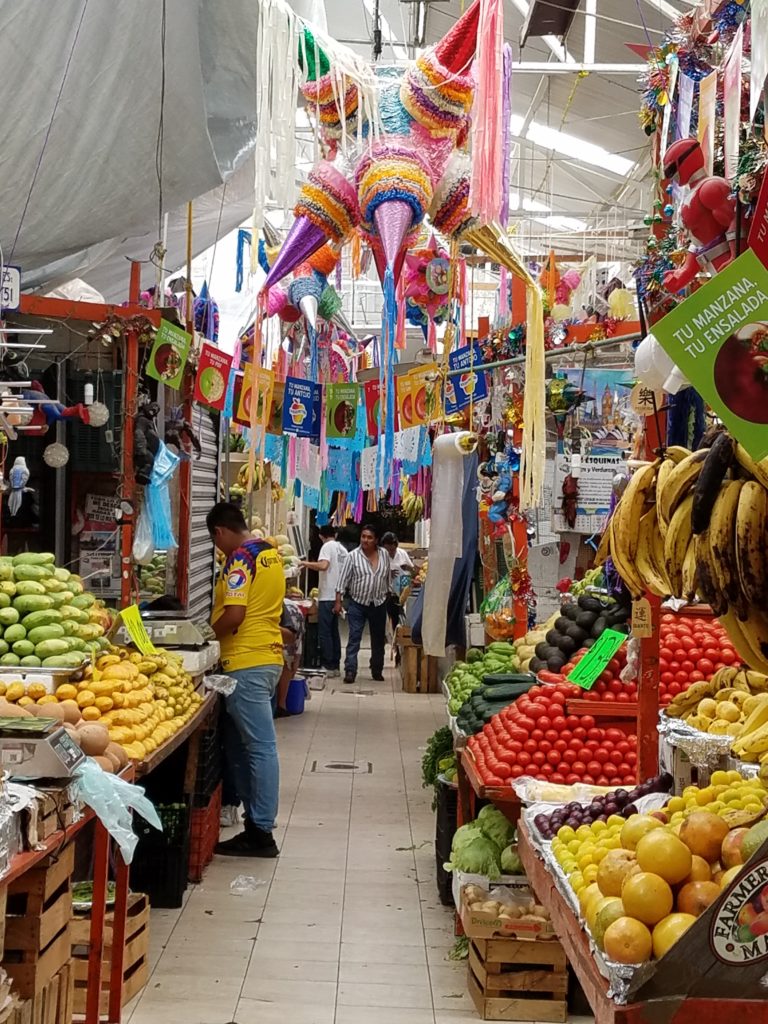
Produce
The produce quality is better than the grocery stores. If you don’t know what something is, the vendors are more than happy to let you taste it.
Chiles
Mexico is known for its chiles, and you can find all kinds from around Mexico at the mercado. Did you know that when a fresh chile is dried, it’s name changes, too?
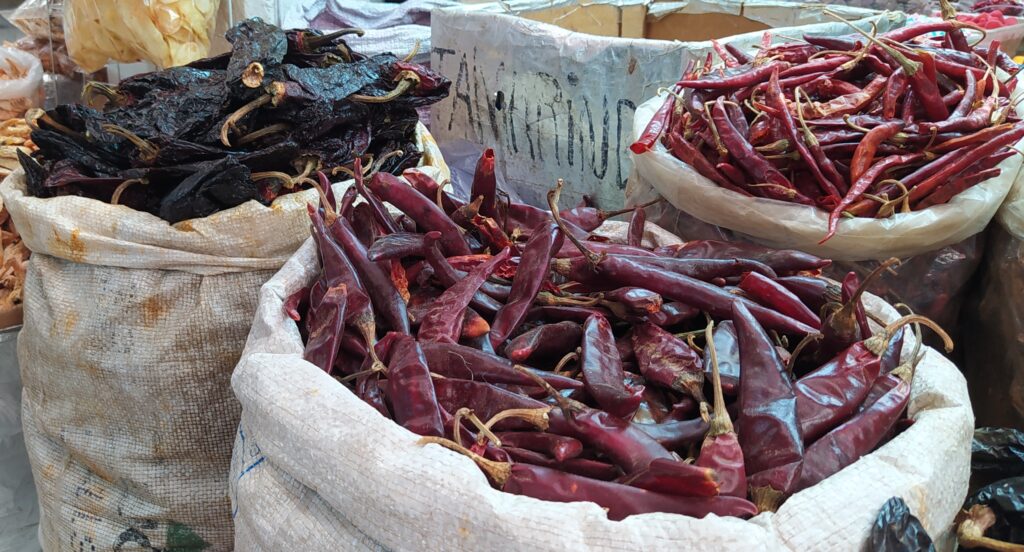
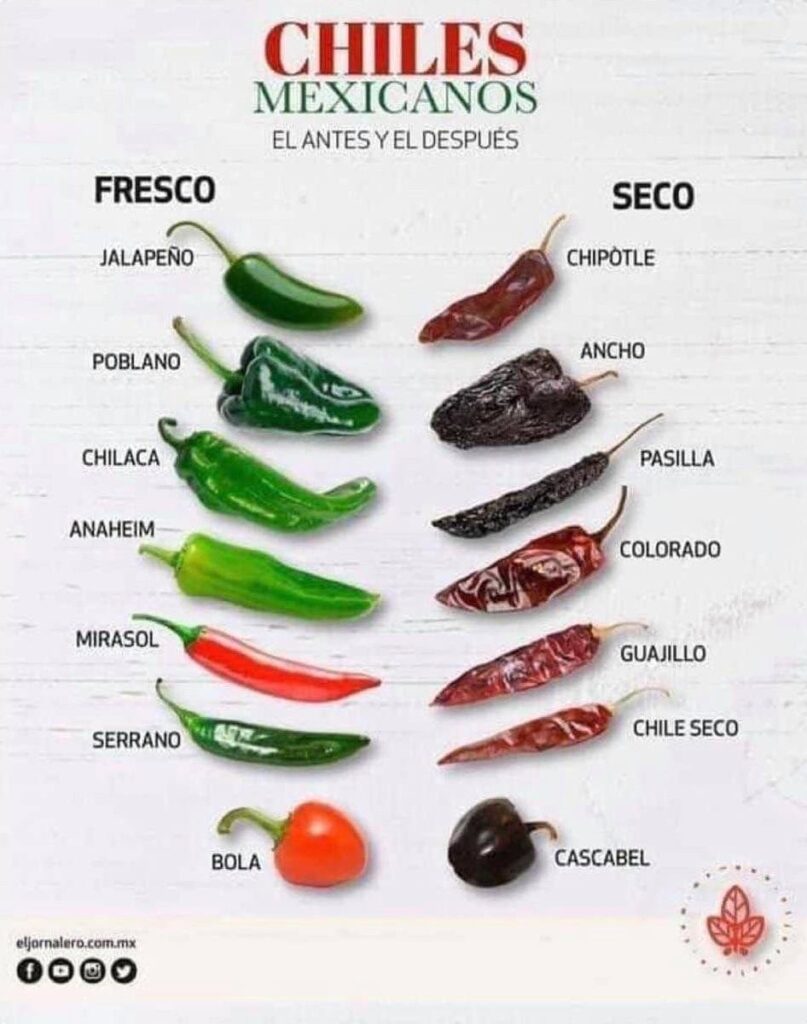
Meat
Green chorizo is a specialty of Toluca, Mexico, but Mercado La Cruz has two vendors who sell this specialty. Green chorizo is made with pork, roasted green chilis and garlic as a base, but many other ingredients can be added such as nuts, fruits and spices. We highly recommend it. (Tom will be making his own green chorizo so stay tuned!)
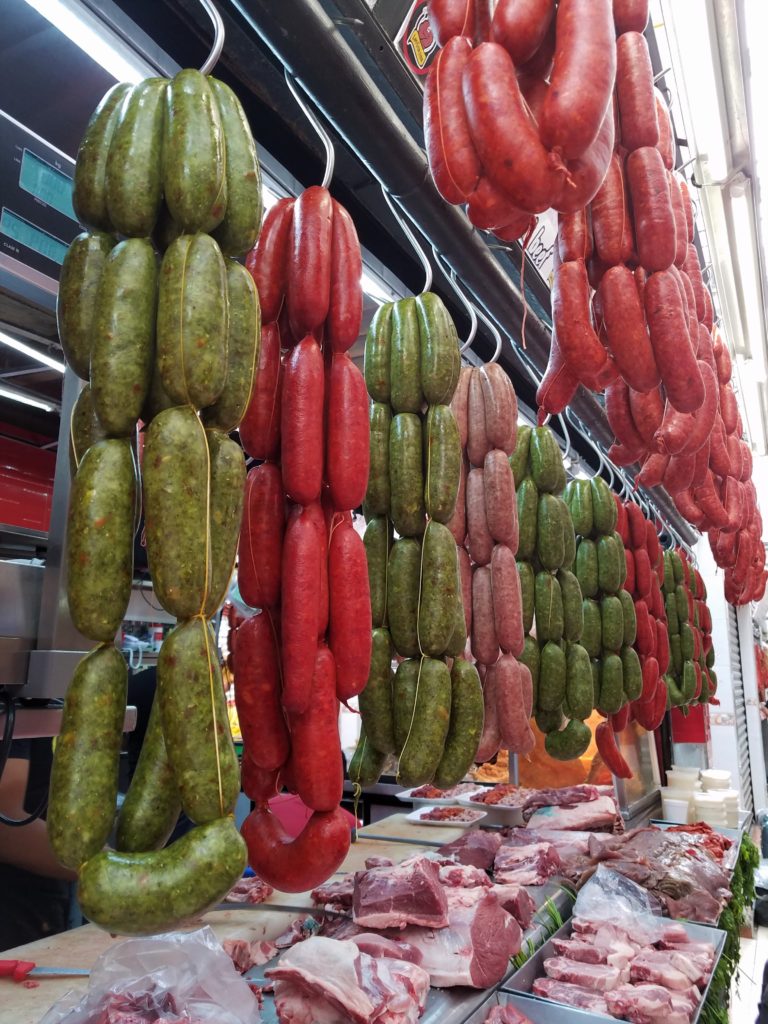
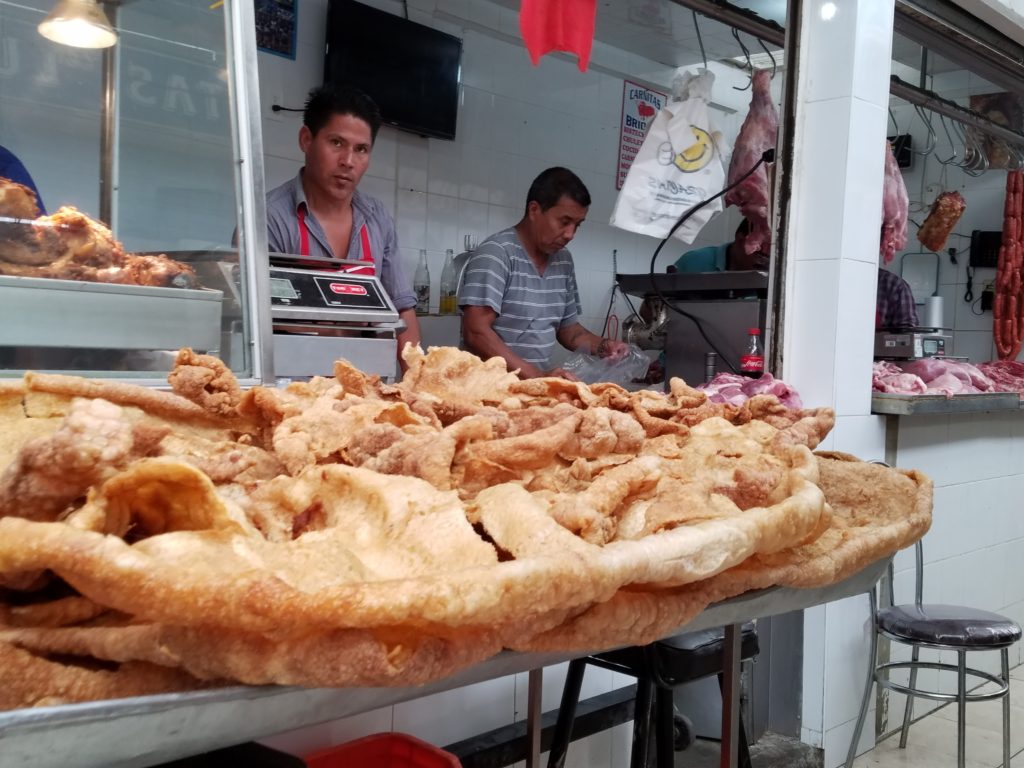
Seafood
Queretaro may be in the dead center of Mexico, but we get fresh fish and seafood delivered every day. Vendors with skin, filet and portion whatever you need. Some serve aguachile and fried fish. This mural was hidden in a corner.

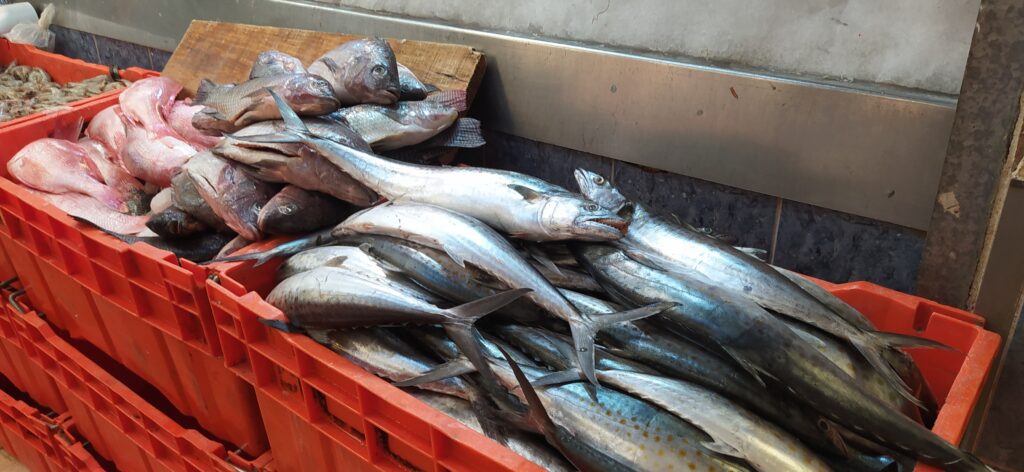
Antojitos
Small, cramped food counters serve local food on the fly. We ate at one of these antojitos (which means small bites) where the whole family was involved. Mama ran the show, multi- tasking between the grill and the customers. One son served some of the clients and controlled the money. Another son was in charge of the drinks. Grandmama pressed the tortillas. Their whole kitchen area was the size of a master bathroom.
The counters were covered with different meats and roasted veggies. Tacos were served warm with one of the fillings. A quesadilla was a taco with cheese and your choice of filling. Wash it all down with a real glass-bottled Coco-Cola and you have the perfect local meal!
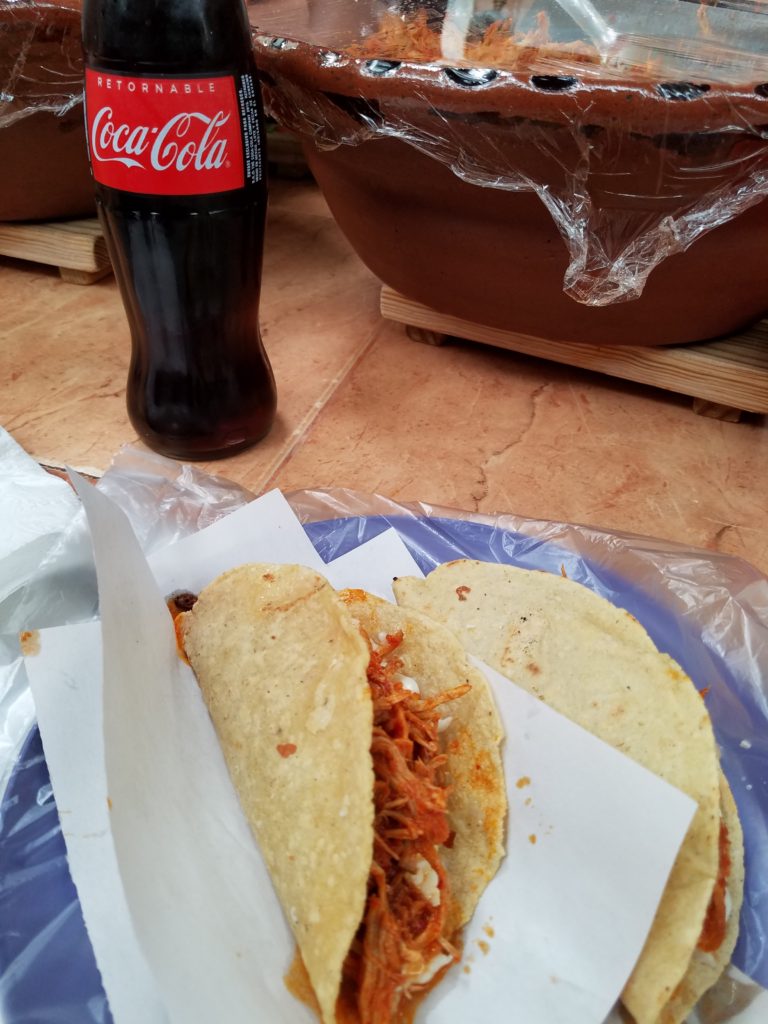
Pinatas
And don’t forget to look up. Pinatas decorate the ceiling ready for any type of celebration. You’ll see the traditional star shaped pinatas and even some superhero pinatas. Pinatas are a favorite addition to any holiday, birthday, or get-together.
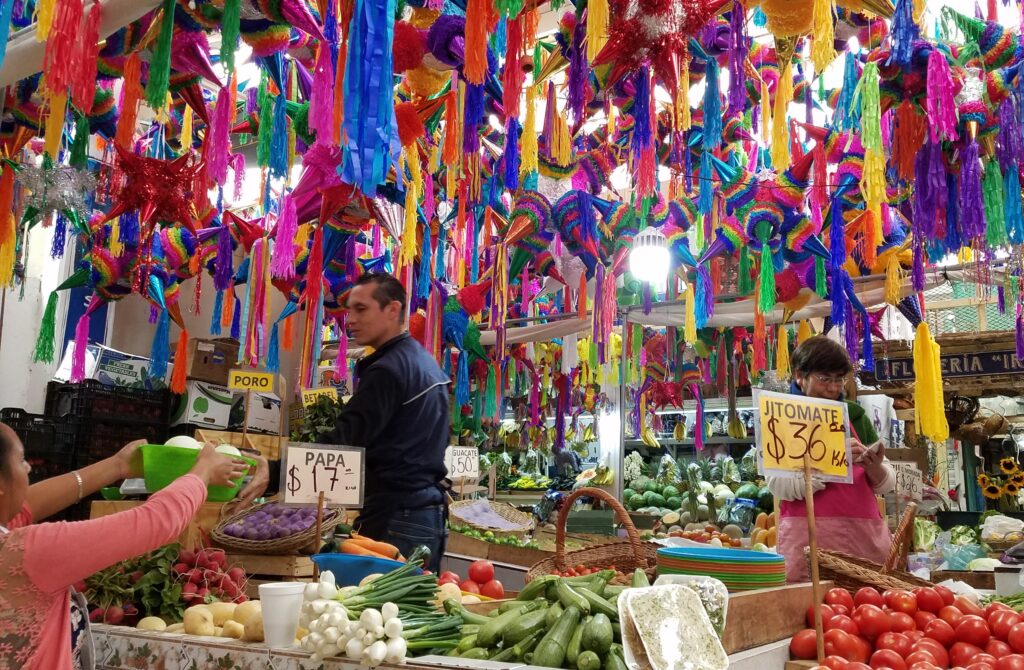
Wherever you wander in the world, a local market should be on your list of main attractions. This is the heart and life of a city, and there’s no better waty to get to know the people then through their local food.

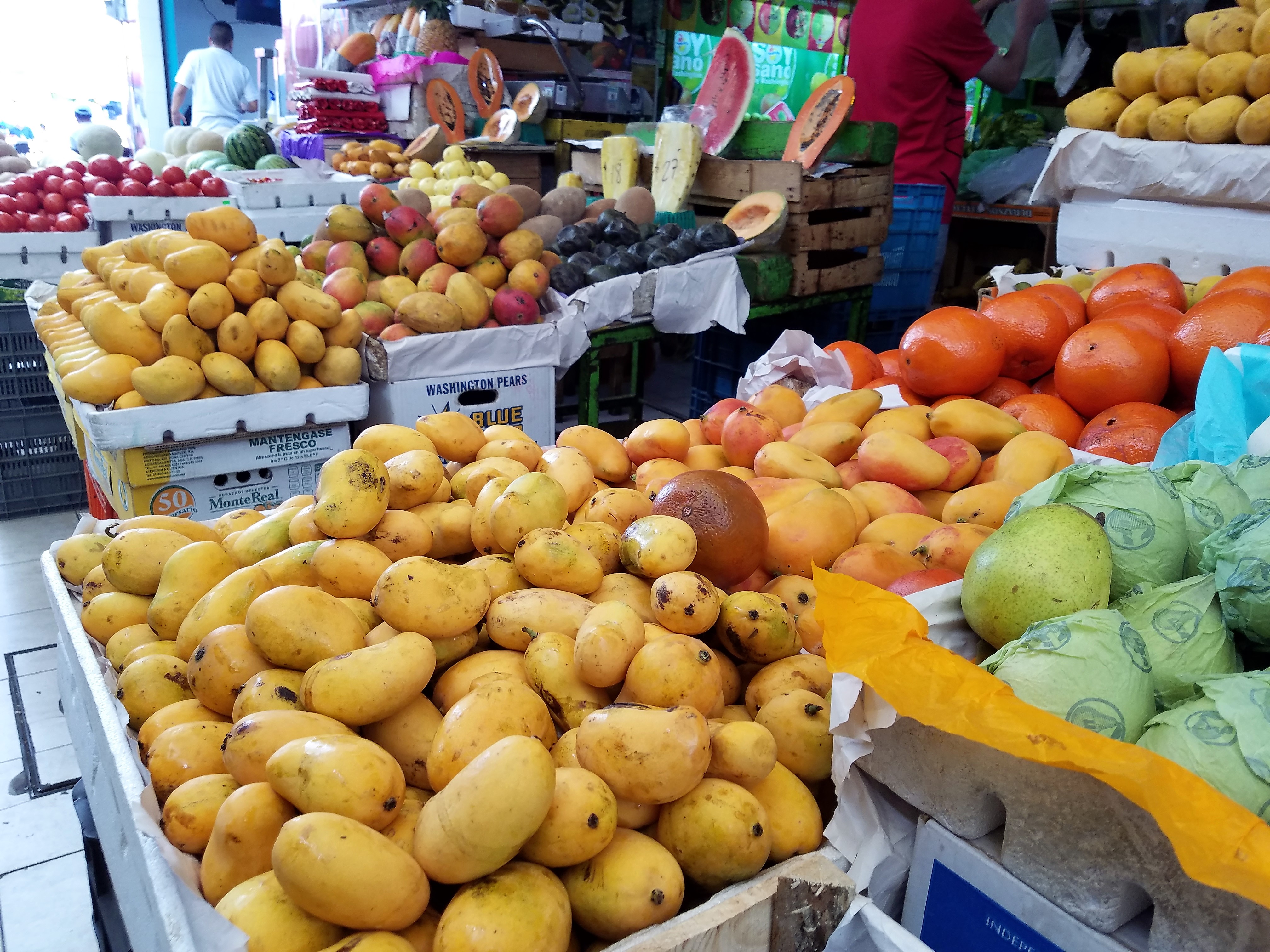

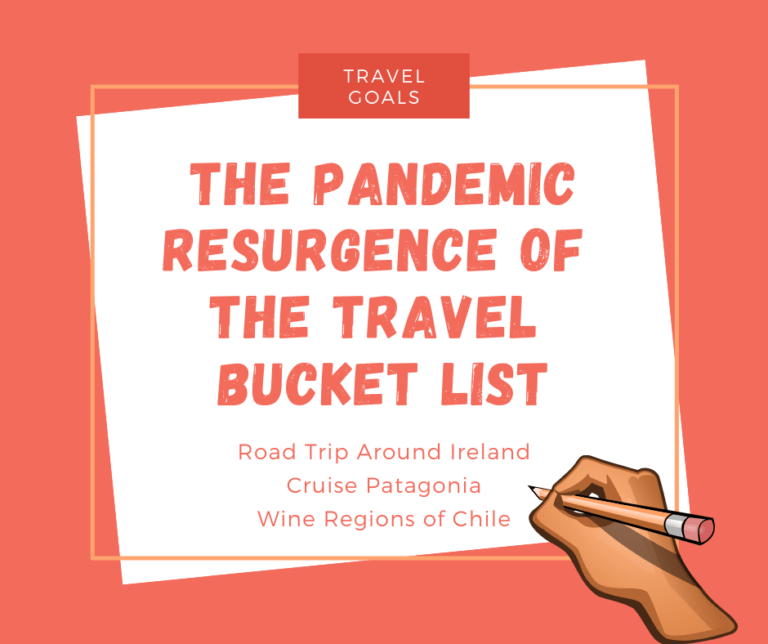
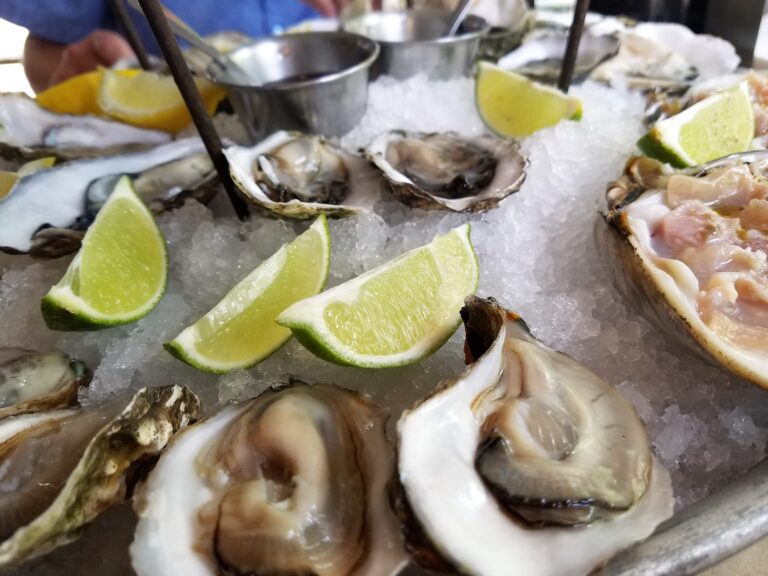
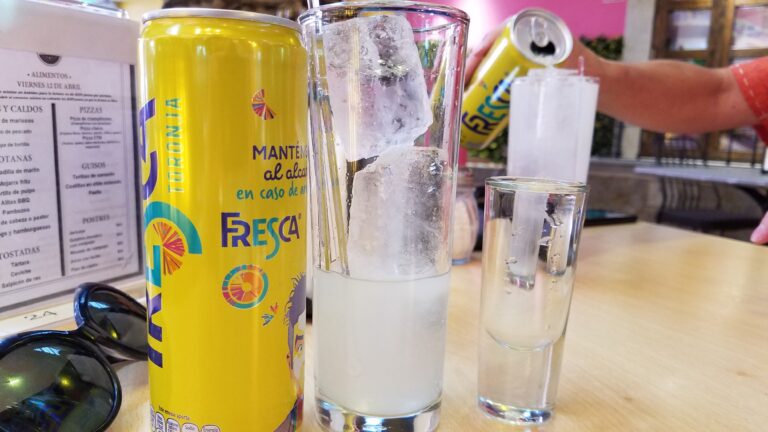
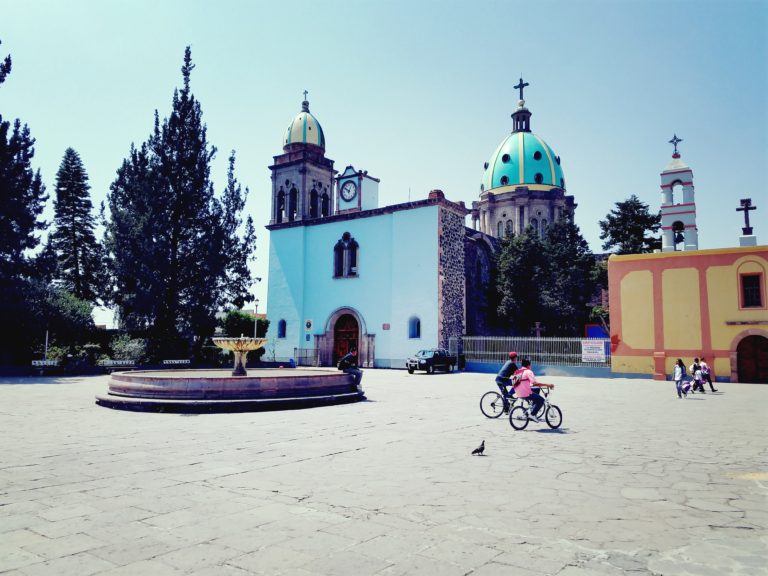
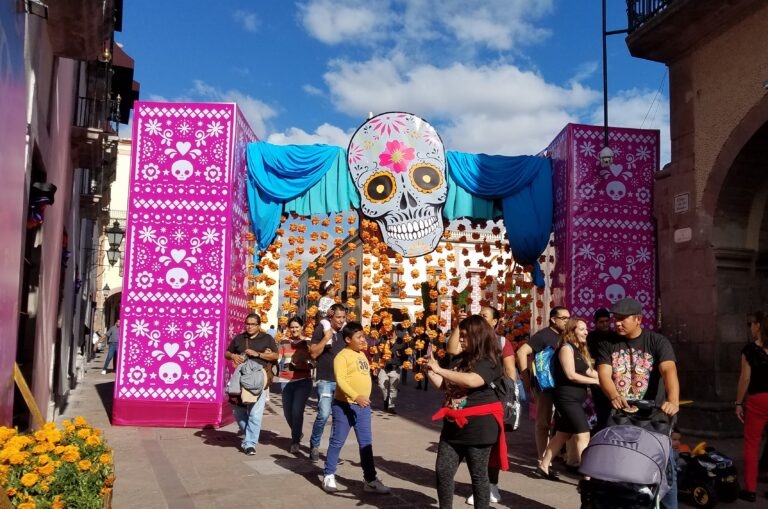
These mangoes look awesome. Thanks for sharing
Nice post, I find it’s always a treat to see what someone is describing when it comes to food. We are very much anticipating a visit to the city; I do have a question… is it common there to find organic produce? Or is it more or less the “default”..? I know the chemicals/pesticides, etc are very expensive to use on crops, so am quite curious as to whether most Mexican farmers in that area use them.. (certification is a different story, of course, and it’s not exactly what I’m asking about.) Thanks!
Hi LJ,
Queretaro is an agricultural state and many things are grown here: figs, peaches, nuts, pomegranates, avocados, corn and grapes (for table and wine). A basic google search showed me that pesticides are not regulated in Mexico, and maybe it’s naive, but because these are smaller individual farms, we feel that it is more organic.
It’s definitely something to ask each individual seller. Many locals sell their produce at the markets and you would have to ask them individually if they use chemicals/pesticides. Unfortunately, I don’t have a definitive answer to that. This is an excellent topic that needs more research.
Thank you for your fairly comprehensive reply.
🙂
I did do some looking around and found one article from 2009 that contained a paragraph stating that Querétaro contributed almost 8% of organic production, the highest total, though the raw number isn’t exactly staggering, ha! It was the highest, nonetheless. I would assume that in the past decade, it’s continued to grow, with a few other articles suggesting that the market has grown, but mostly for export purposes. There was a delightful hint that small scale farms and indigenous farmers already do this, but without certification.
I would assume that it’s out there, then, and as you suggested, to ask individual sellers about the presence of
residuos de agroquímicos, hormonas, antibióticos, ni sustancia alguna de síntesis química.
Thanks again!